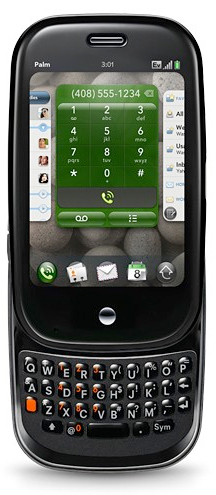
Competition in the mobile phone space is heating up and the smartphone — a mobile phone with computer-like functionality — coupled with ever faster wireless network speeds are changing the way we access news, information, connections with our friends and family, and so much more.
A quick story illustrates one amusing (though not to my wife) use of my iPhone when I first got it. We were at a dinner party when the conversation came around to a particular song, but no one could recall who sang it. As the conversation continued I quickly used the web browser to Google the song name and roughly 30 seconds later blurted out, “Woody Guthrie!”
“Yes!,” everyone cried out simultaneously. “How did you know that,” one woman asked and I whipped out my iPhone to show how I’d quickly and almost instantly found the answer and we then had an interesting conversation about how the world was shifting toward one where we all could have instant access just like that.
A few years ago smartphones were few in number and came from manufacturer’s like Palm (e.g., Treo) and Nokia — and devices powered by Windows Mobile — were robust but somewhat limited in functionality and required an (arguably) geeky nature to use fully. The Blackberry device by Research in Motion (RIM) was a more limited one as far as applications go, but its external keyboard (to many the most important feature) and easy access to email (which was “pushed” to the device automatically) made it the perfect communication appliance for daily business use.
When Apple demonstrated and delivered the game-changing iPhone in June of 2007, its surprising ease of use and simple way to manipulate applications (e.g., pinching and zooming in on a photo or webpage) made a device like this easily accessible to the masses. Because of quick sales of the iPhone and a developer kit to build applications, Apple quickly saw a huge array of applications delivered on the device (more than 25,000 to date). Because of the simplicity of the device and the base of applications already available, sales accelerated to the now installed base of 21.2 million units and the announcement Monday, June 8th of a third generation model (and the second generation lower price point of $99) has caused most observers to see those numbers doubling within a year or so.
Though the device is seen by many as perfect, many others decried the screen and software based keyboard and wished for an external one. Others wanted devices more “open” as in open source software and thus this infant smartphone marketplace has significant growth within it.
 Last week came the new Palm Pre, a smartphone that is the first to most closely emulate the key ease of use and simple application manipulation first delivered on the iPhone. Google’s Android — a software platform rather than an integrated device — is also geared toward smartphones and many of its features rival the iPhone’s (and now the Pre’s).
Last week came the new Palm Pre, a smartphone that is the first to most closely emulate the key ease of use and simple application manipulation first delivered on the iPhone. Google’s Android — a software platform rather than an integrated device — is also geared toward smartphones and many of its features rival the iPhone’s (and now the Pre’s).
Now that the devices have moved quickly toward a place where average users (vs. geeks only) can set up, use and even maximize usage of these smartphones, a fast network to use them on is key as well. The third and fourth generation wireless mobile phone networks are, in fact, already here (though lacking in ubiquitous coverage) and the devices plus fast networks means that we all are walking around with computers in our pockets or purses that are, in effect, extending our minds.
This article I’d read came as a surprise when I learned that one of Apple’s fastest growing iPhone market segments were comprised of people that didn’t own a personal computer or couldn’t afford a broadband connection. But the iPhone IS a computer and provides email, web browsing, video watching, Twitter use and all of the other things people feel they must have to be a part of our connected society, and thus allowed them to be a participant.
I’ve been in conversations with educators about technology and social media — and about the current paradigm of cramming kids’ brains with facts — and my asking why we need to teach rote facts about the countries that surround, say, the Baltic Sea when it can be instantly looked up? Are there ways to focus on how to search, ways to seek and verify authentic material, and move toward an educational model that would assume an always on, always connected student population?
In our working world, enlightened companies are realizing that providing a solid and good experience to employees with access to information and work processes (and email, of course) allows the employee to access and deal with a task, communication or even idea when they have a moment or when inspiration strikes, rather than hope that all that can be stored up and dealt with when they’re in the office.
Tapping into the streams of consciousness of people one follows on Twitter, reading blog posts and staying abreast of news and other information, means that all of us are more aware of the meaningful inputs of others whom we find value.
Then there is just the simple utility of having movie showtimes, a dictionary, time zones, airfare lookups, stock tickers, and even games, means that smartphones extend our minds so that we’re no longer tethered to a desk for computer and internet use in the same way that the mobile phone for voice made us free from a phone line.